Pintura decorativa para paredes: tipos y técnicas más comunes
El concepto que tenemos en torno a lo que es la pintura decorativa se remonta a la época del Renacimiento. Una corriente y movimiento cultural que surgió en Europa Occidental durante los siglos XV y XVI conformando así el inicio de la Edad Moderna.
Sin embargo, el verdadero origen de la pintura decorativa para paredes viene de mucho, mucho tiempo atrás. Cuando las primeras civilizaciones como forma de comunicarse y/o dejar constancia de un hecho, realizaban en las cavernas que habitaban diferentes marcas y dibujos.
Un método de decoración que ha ido evolucionado a la par que lo hacía el ser humano, puliéndose y perfeccionándose hasta llegar a lo que es hoy en día. En este artículo, vamos a abordar los tipos y técnicas más conocidas de una pintura que posee tantos estilos como culturas existen en el mundo.
¿Qué es la pintura decorativa?
La pintura decorativa es un tipo de pintura que se emplea para transformar el aspecto de una superficie, sea cual sea su dimensión, u objeto. El fin no es otro que embellecer la apariencia del soporte existente y, también en algunos casos, reforzar la resistencia y durabilidad del revestimiento sobre el que se aplica.
Un material que puede usarse en superficies expuestas a impactos, como por ejemplo muebles, mesas, sillas, pisos, etc, pero también en las superficies no transitables. En este sentido, las paredes son sin duda una de las superficies donde más se utiliza la pintura decorativa como recubrimiento. Tanto en espacios interiores de casas y negocios como, por qué no, en exteriores. Cabe decir que este último ámbito de aplicación es menor, ya que no todas las pinturas son aptas para aplicaciones al aire libre por no ser resistentes a los rayos del sol, al agua y otras condiciones climatológicas.
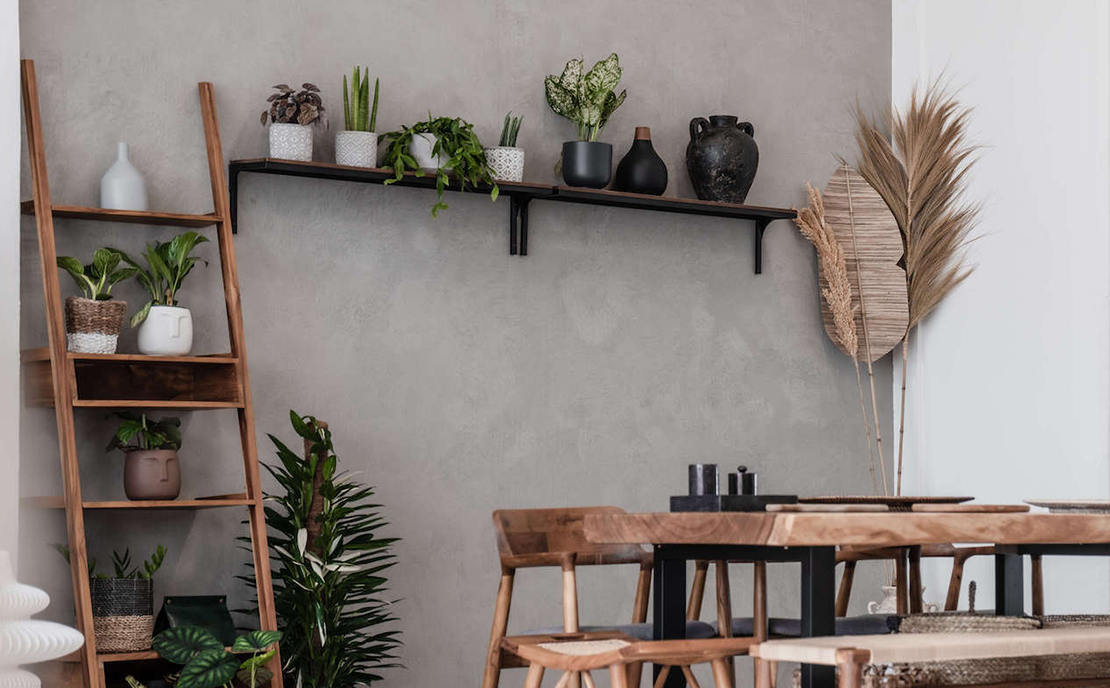
¿Dónde aplicar la pintura decorativa?
La pintura decorativa permite abarcar un amplio abanico de estilos, diseños y texturas. Por ello es improbable repetir los mismos acabados, ya que siempre habrá un matiz que marcará la diferencia entre una superficie respecto a otra. La técnica elegida, el color de la pintura y la manera de aplicar el producto, cada cual tiene su procedimiento particular, son factores que distinguirán los acabados finales.
Aunque las paredes suelen ser las preferidas para valerse de esta técnica, los beneficios de utilizar esta pintura se extienden a techos, pisos y mobiliario. En todos ellos el uso de este producto no se limita a dar color a la superficie, sino que le dota de personalidad y estilo a través de la textura creada.
Una técnica de decoración, con especial incidencia en interiores, que se ha tornado protagonista en la renovación de habitaciones, salones, cocinas, baños y grandes locales comerciales. Pasando de ser una pintura de uso meramente profesional a cobrar popularidad entre los particulares que desean darle una segunda vida a sus hogares.
Ventajas de la pintura decorativa para paredes
Cada pintura decorativa tiene beneficios específicos. Algunas pueden usarse en exteriores además de interiores, otras pueden crear acabados metálicos u oxidados, también las hay con propiedades impermeables, etc. Por eso, es necesario evaluar previamente las necesidades de cada revestimiento. Claramente no es lo mismo una pared de un baño, expuesta día tras día a la humedad, que una pared de una habitación. Factores que desarrollaremos más adelante.
Por ahora, y de modo genérico, vamos a detallar las principales ventajas que comparten estos tipos de pintura.
Amplia variedad de efectos y colores
La pintura permite crear multitud de combinaciones al poder jugar con los colores, los efectos y texturas. Desde propuestas más convencionales a propuestas más arriesgadas para destacar un elemento concreto de la estancia y que la atención se pose sobre él. Contrastes que cada vez están más de moda.
Versatilidad de aplicación
Del mismo modo que las creaciones son prácticamente infinitas, se puede aplicar en numerosas superficies y estancias. Paredes, pisos, techos, muebles, etc. En interiores y exteriores.
Rápidas y fáciles de aplicar
A diferencia de otros revestimientos que exigen eliminar los ya existentes, la pintura decorativa se coloca encima ocultando por completo lo que hay debajo. No hay obras, ni tampoco escombros. Una rapidez a destacar de igual modo que la facilidad de aplicación. ¿Por qué complicarse cuanto todo son ventajas?
Protegen el nuevo revestimiento
Muchas pinturas no solo tienen una función puramente decorativa, sino que también ayudan a reforzar la pared o el piso. Protegen al nuevo revestimiento del desgaste, roces, impactos, etc.
Posibilidad de acabados impermeables y antideslizantes
Por si fueran pocas las ventajas vistas hasta el momento, hay que subrayar los acabados impermeables y antideslizantes que algunas pinturas ofrecen. Dos factores cada vez más determinantes para apostar por esta técnica.
Son muy duraderas
Si se aplican correctamente y el uso que se les da es el adecuado, pueden ser muy duraderas y no necesitar que la superficie sea repasada con otra capa de pintura en poco tiempo.
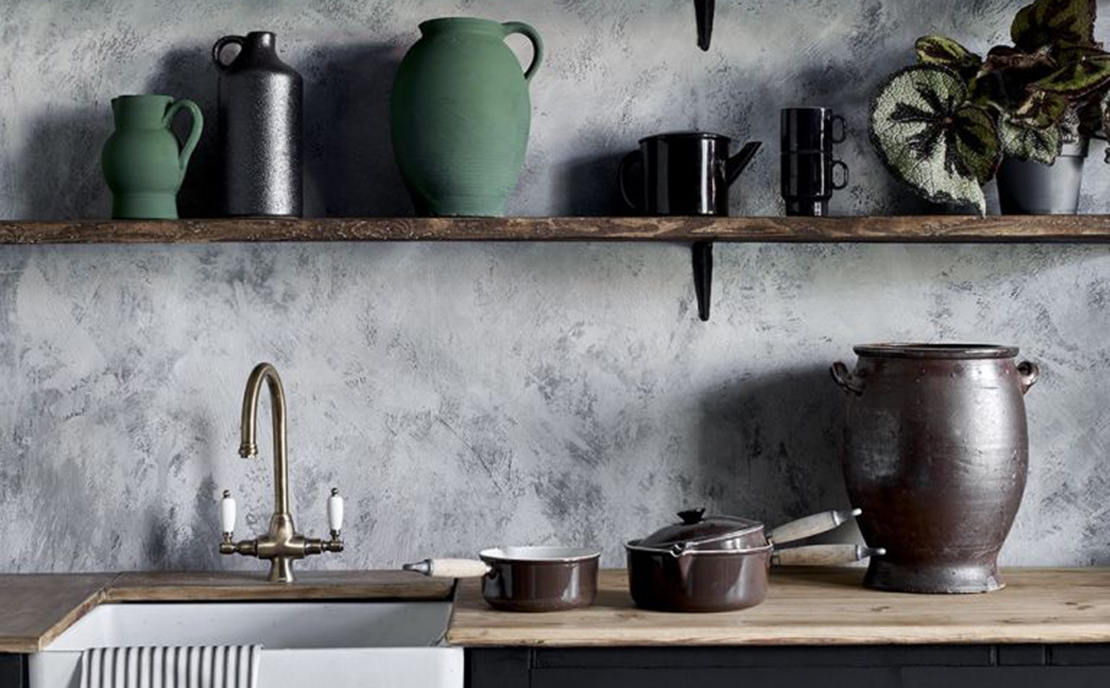
Factores para elegir una pintura decorativa
¿Qué pintura decorativa elegir? La respuesta es muy sencilla. La más adecuada para la superficie donde vaya a ser aplicada. Ese es el consejo más valioso. Centrarse únicamente en el acabado o el color es un error, porque cada soporte necesita unas propiedades particulares.
Vamos a ver los factores más importantes que hay que considerar para elegir una pintura u otra son los siguientes:
1. Material a cubrir con la pintura decorativa
Lo acabamos de decir. No todas las pinturas encajan para los mismos soportes. Porque sencillamente no es lo mismo revestir la madera que una pared de pladur, por ejemplo. Así que hay que informarse bien antes de comprar una u otra.
2. Diferenciar superficies transitables de las no transitables
Revestir los pavimentos entraña más complejidad a largo plazo que las paredes, puesto que los primeros necesitan de una pintura que sea mucho más resistente al desgaste por abrasión, impactos, etc. Como también ocurre con el mobiliario.
Igualmente, también hay que valorar la estancia que va a ser pintada. Los baños y cocinas necesitan unas pinturas con propiedades impermeables, por ejemplo. Productos lavables, anti-humedad, etc.
3. La resistencia en exteriores
Del mismo modo que el material y el modelo de superficie son factores sustanciales, la resistencia en espacios exteriores también lo es. Hay pinturas decorativas que son inalterables a la luz solar, lluvia y viento. Pero no todas.
4. Calidad de la pintura decorativa
Parece una obviedad, y lo es. Pero muchas veces por intentar ahorrar, el resultado final acabará siendo más caro de lo que pensábamos. La calidad no es un factor que tomarse a la ligera.
5. Acabado decorativo
¿Qué es lo que estás buscando exactamente? ¿Una pintura decorativa con acabado brillante? ¿Más satinado? ¿O efectos metálicos y oxidados tal vez? Cada pintura tiene la capacidad de garantizar un acabado decorativo u otro.
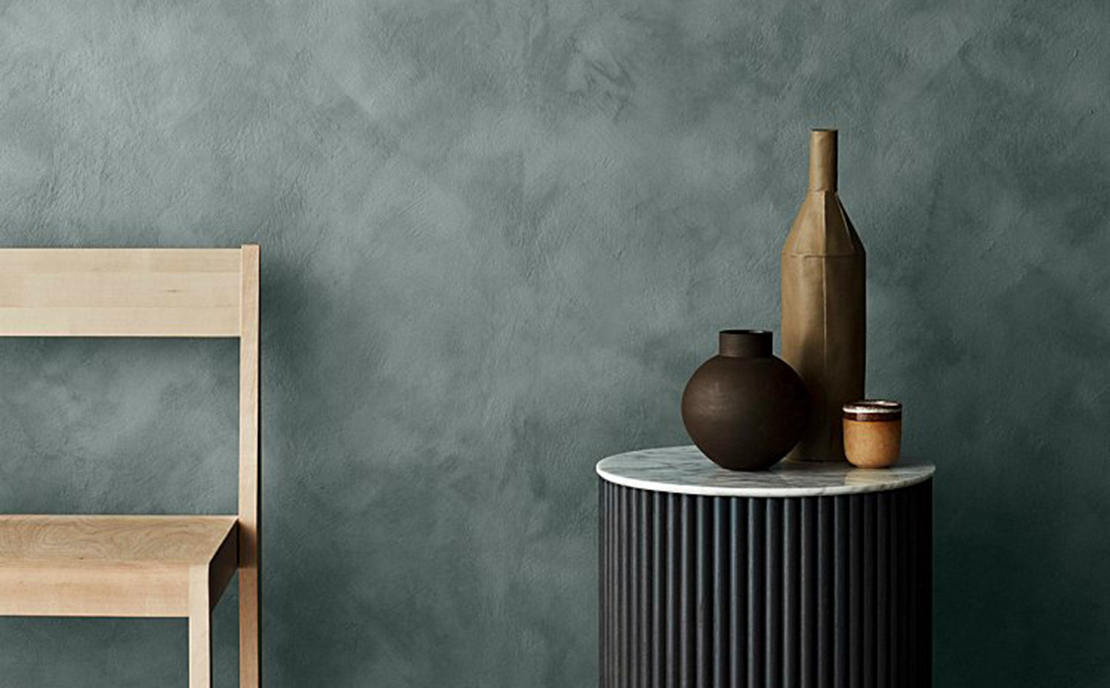
Tipos de pinturas decorativas para paredes
Existe una amplia gama de pinturas para decorar paredes en función del uso y prestaciones que se busquen. En la lista que hemos realizado hemos tenido en cuenta las más frecuentes para renovar las estancias del hogar.
1. Pintura de látex o plástica
La pintura de látex o plástica es la más común para las paredes interiores. Aunque es cierto que dependiendo de su composición, a veces también se puede usar en exteriores.
Se caracteriza por ser una pintura a base de agua, lo que evita los olores a menudo desagradables de las que son a base de solvente. En este sentido, garantiza resistencia al agua. Además es muy fácil de aplicar, se puede lavar y se seca muy rápido. Sin embargo, no es recomendable en superficies de madera que no estén tratadas.
Una pintura de látex o plástica que a su vez se divide en acrílica y vinílica y ofrece tres tipos de acabados: mate, satinado y brillante.
Pintura plástica mate: acabado más opaco y sin brillo. Cuesta un poco más de lavar pero es perfecta para las paredes con desperfectos muy notorios a la vista o que tienen muchos años.
Pintura plástica satinada: a medio camino entre el acabado mate y el acabado brillante. Muy recomendable para pintar paredes lisas o con colores intensos, ya que realza la tonalidad de las mismas.
Pintura plástica con brillo: acabado más reflectante. Se limpia muy fácil con agua, por lo que es una pintura decorativa ideal para habitaciones como baños y cocinas. Será necesario, eso sí, lijar la pared de manera previa.
1.1 Pintura acrílica
Pintura con resistencias superiores, tanto en interior como exterior. Asegura un mayor poder de impermeabilización en las paredes y, además, resiste a la perfección al moho y a los rayos del sol. Presenta una excelente adherencia sobre muchos materiales, a excepción de superficies de madera que no estén tratadas.
1.2 Pintura vinílica
La versatilidad de la pintura plástica vinílica es mayor, así como su flexibilidad. Igualmente su olor es prácticamente imperceptible y su aplicación sencilla.
2. Pintura esmalte sintético
Pintura compuesta por resinas sintéticas al disolvente. Por ello, a diferencia de la pintura plástica, es mucho más duradera y resistente. Asimismo preserva muy bien el brillo de la superficie, incluso en espacios exteriores porque resiste mejor al agua y a la humedad. Los acabados que ofrece son más lisos. Se emplea sobre todo en paredes de madera o metal, aunque su campo de aplicación es mucho más extenso.
No obstante, requiere de un periodo de secado superior y hay que tener especial cuidado con los gases intrínsecos de esta pintura decorativa para paredes. Unos gases que pueden ser perjudiciales y ocasionar incluso mareos si el espacio no está ventilado adecuadamente.
3. Pintura esmalte acrílico
Su nombre no deja lugar al misterio. Pintura formulada con resinas acrílicas, catalizadores y pigmentos. Completamente soluble en agua y sin olor, por lo que no hace falta ser tan rigurosos con la ventilación de la estancia como con las pinturas de esmalte sintético. Se utilizan con mucha frecuencia en decoración artística.
4. Pinturas de primera mano
Recubrimiento previo que sirve como base de la pintura decorativa. La finalidad de la imprimación es consolidar el soporte y facilitar la posterior absorción de la pintura empleada para decorar y darle el acabado a la pared. La adherencia mejora de manera exponencial, minimiza las imperfecciones y reduce al mismo tiempo el gasto de pintura de acabado.
5. Barnices
Los barnices se usan para proteger cualquier tipo de pintura además de darles brillo o color. Normalmente, se hacen a base de poliuretano. Sobresalen por sus propiedades impermeables, su durabilidad y resistencia frente a la abrasión.
5. Pintura mineral o al silicato
Gracias a su alto poder de cobertura y su permeabilidad al vapor de agua, la pintura mineral o al silicato está indicada principalmente para las paredes que presentan problemas de humedad.
Pintura decorativa a base de pigmentos minerales inorgánicos y silicatos insolubles. En apariencia, se asemejan a la pintura a la cal pero son de mayor calidad y más resistentes. Al fabricarse con materias primas renovables, pueden clasificarse como pinturas ecológicas.
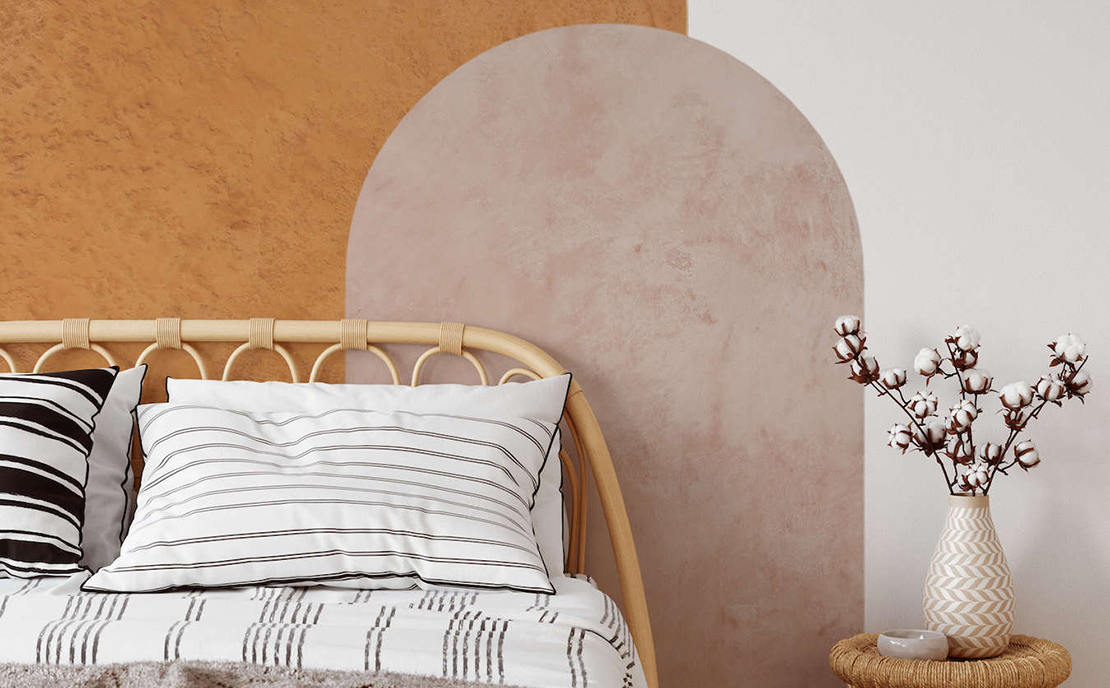
Técnicas de pintura decorativa para paredes
Las pinturas constituyen uno de los recursos más utilizados para adornar las paredes, gracias a la pluralidad de efectos que se pueden conseguir. Existen numerosas técnicas de pintura decorativa para paredes entre las que elegir la que más se adecúe a las demandas ynecesidades. A continuación, vamos a exponer las principales.
Tierras florentinas
La particularidad de la técnica decorativa de las tierras florentinas está en las resinas especiales de su composición. Unas resinas en varios colores que son las causantes de ese acabado tan característico cuando se expanden por las paredes. Más allá de que existe una amplia gama de colores, las tierras florentinas destacan por su buena dureza y resistencia, además de ser lavables con facilidad.
Las tierras florentinas no dejan de ser, en definitiva, un estuco con efectos sombreados y envejecidos que imita a las paredes de estilo renacentista. Una técnica de pintura decorativa para paredes muy especializada, con texturas suaves y pequeños relieves. Aunque su aplicación es diversa, generalmente se emplea el blanco sobre fondos coloreados o tintes naturales previamente mezclados.
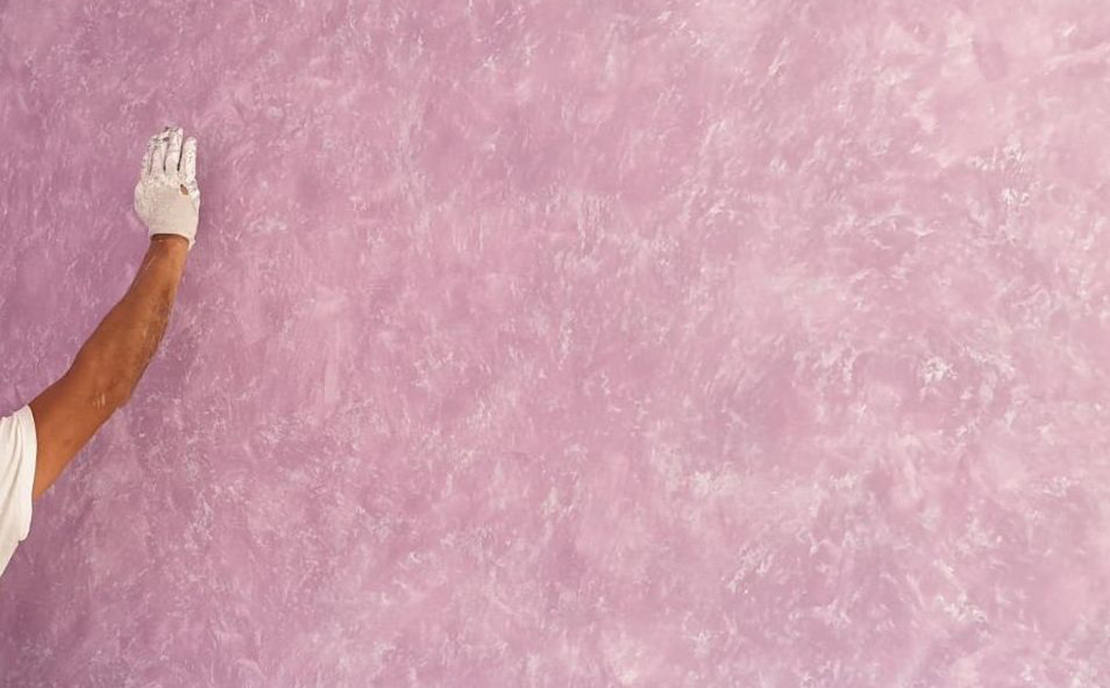
Estuco veneciano
El estuco veneciano es otra de las técnicas de pintura decorativa para paredes más primarias e importantes. Originaria de Venecia, es un efecto estético resultante de utilizar una pasta hecha con polvo de mármol, cal, pigmentos y yeso cuyo acabado se asemeja mucho al mármol por ese brillo tan singular.
Entre sus beneficios más interesantes, se encuentra su resistencia a la humedad y su transpirabilidad. Una pintura de gran durabilidad que revaloriza el espacio y que, además, tiene el valor añadido de estar compuesto por elementos naturales.
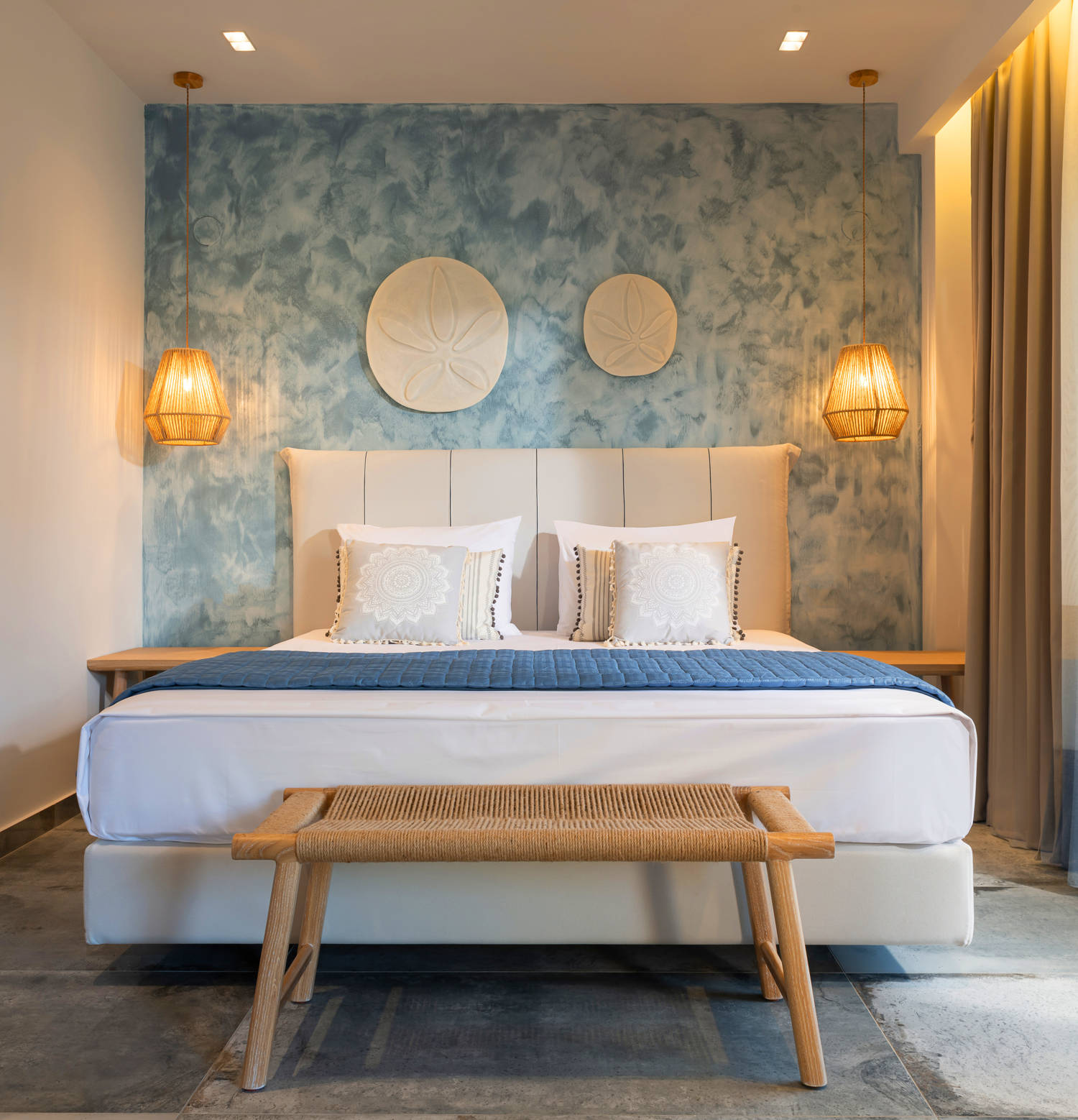
Técnica del esponjado
Otra de las técnicas de pintura decorativa para paredes más recurridas es la del esponjado. Consiste en ir dando golpes suaves y repetidos con una esponja sobre la superficie hasta alcanzar el acabado deseado. El efecto quedará mejor cuanto más ancho sea el poro.
Un acabado que aporta profundidad y volumen a la estancia y que es muy fácil y económico. Ideal para superficies de grandes dimensiones donde el contraste es más impactante. Nosotros recomendamos emplear una esponja natural para un efecto más elaborado.
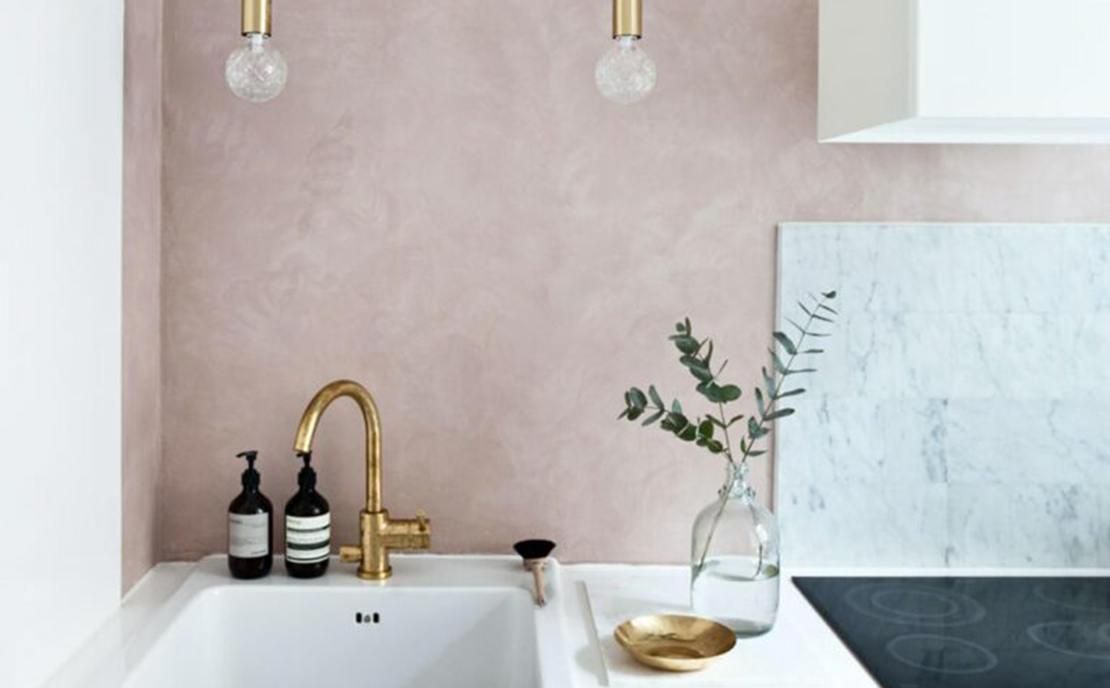
Pintura efecto óxido
El acabado oxidado es un recurso estético que impera en la decoración de interiores, especialmente en las paredes. Un aspecto rústico que a pesar de simbolizar el paso del tiempo, el envejecimiento natural de las cosas, gusta y mucho. Emplear una pintura es la forma más cómoda, rápida y económica de lograr dicho acabado. Una técnica decorativa para paredes que no se limita al hogar, sino que es protagonista también de escaparates de moda, restaurantes de primerísimo nivel, hoteles de lujo e incluso vehículos.
En Topciment hemos desarrollado una pintura de efecto oxidado que no pone límites a la creatividad. Un producto de muchos matices que puede ser utilizado en paredes de interior así como en fachadas de edificios, gracias a su resistencia a la intemperie. Una pintura que incluye partículas metálicas de cobre, bronce, hierro y latón y que puede ser utilizada también como pintura metalizada. Su versatilidad no tiene fronteras. Es compatible con multitud de soportes: microcemento, concreto, ladrillo, cerámica, metal, yeso, pladur, papel, etc. ¿A qué esperas para conocerla?
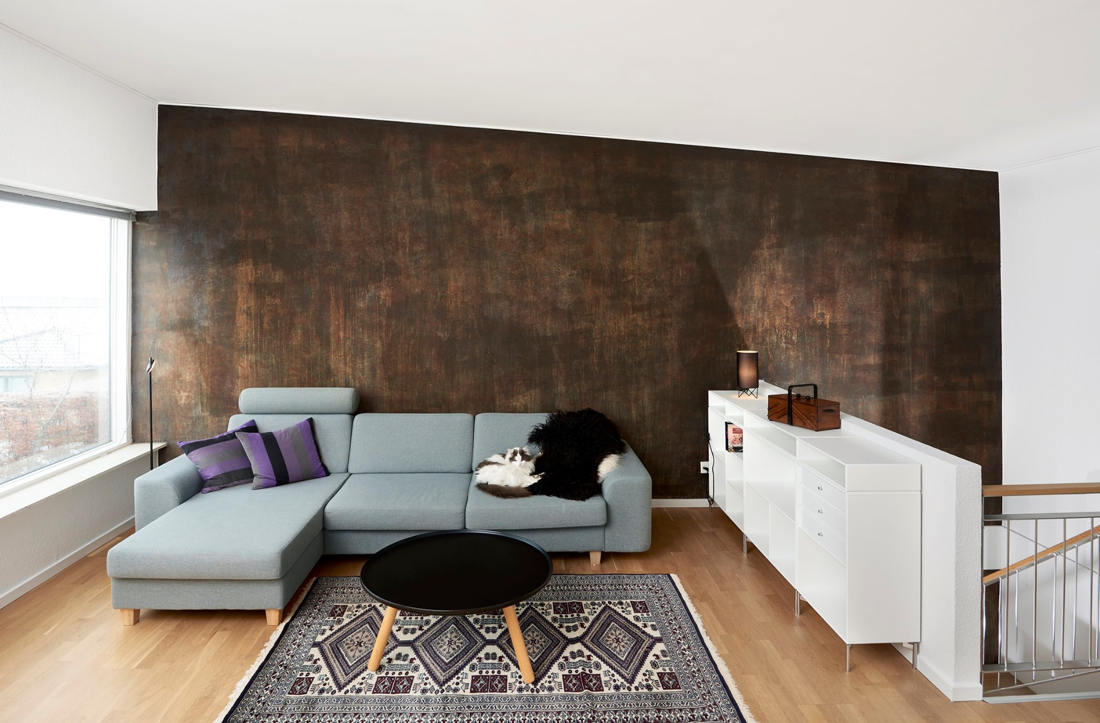
Rodillos decorativos
Los rodillos decorativos no son una técnica de pintura decorativa para paredes nueva, sin embargo ha vuelto a ponerse de moda en los últimos años. Gracias a estos rodillos de goma con relieve y dibujos de lo más variopintos, se crean todo tipo de efectos decorativos en la pared con mucha facilidad. El resultado se parece al del papel tapiz, con las diferencias obvias.
Simplemente tienes que manchar el rodillo con la pintura que escogiste e ir marcando poco a poco en la pared el diseño del rodillo. De esta manera, se crea un patrón repetitivo que cubre toda la superficie de la pared.
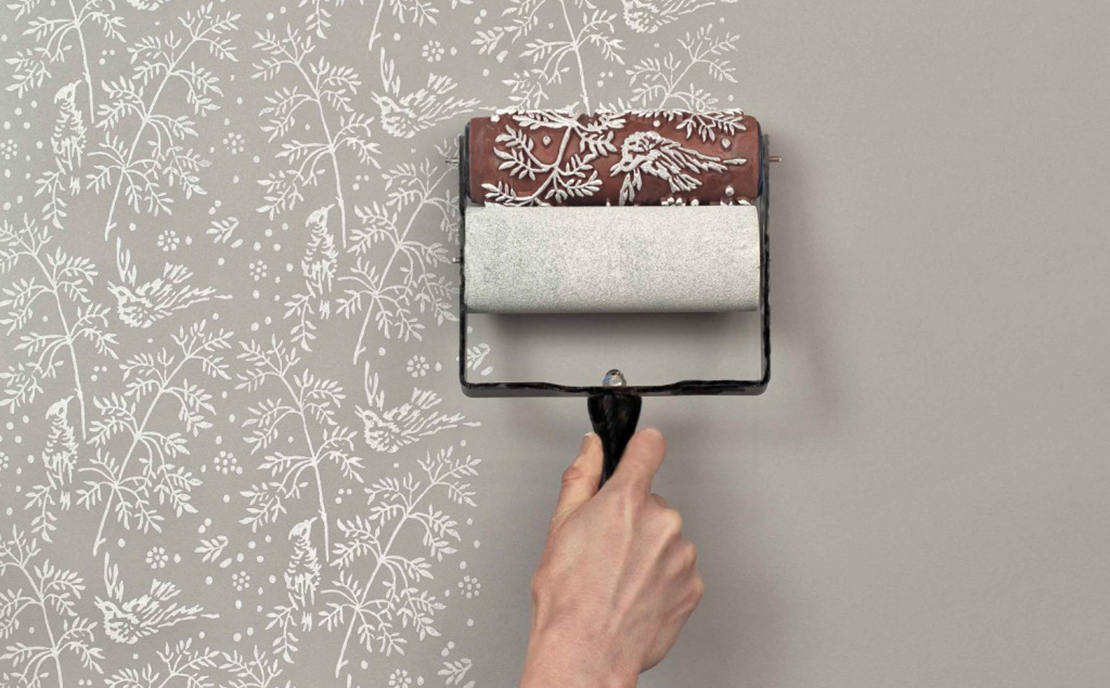
Veladuras
Las veladuras son capas muy finas de pintura, transparentes o semitransparentes de color, que dejan divisar la capa inferior. Una técnica de pintura decorativa para paredes que lleva utilizándose desde hace siglos con el objeto de resaltar o reducir su temperatura y tornarlas más opacas o brillantes.
En Topciment, contamos con veladuras con efecto metal y brillantina que no solo son aplicables sobre paredes, sino también en pisos e incluso muebles. Pátinas muy resistentes que permiten combinaciones incalculables para embellecer todo tipo de superficies.
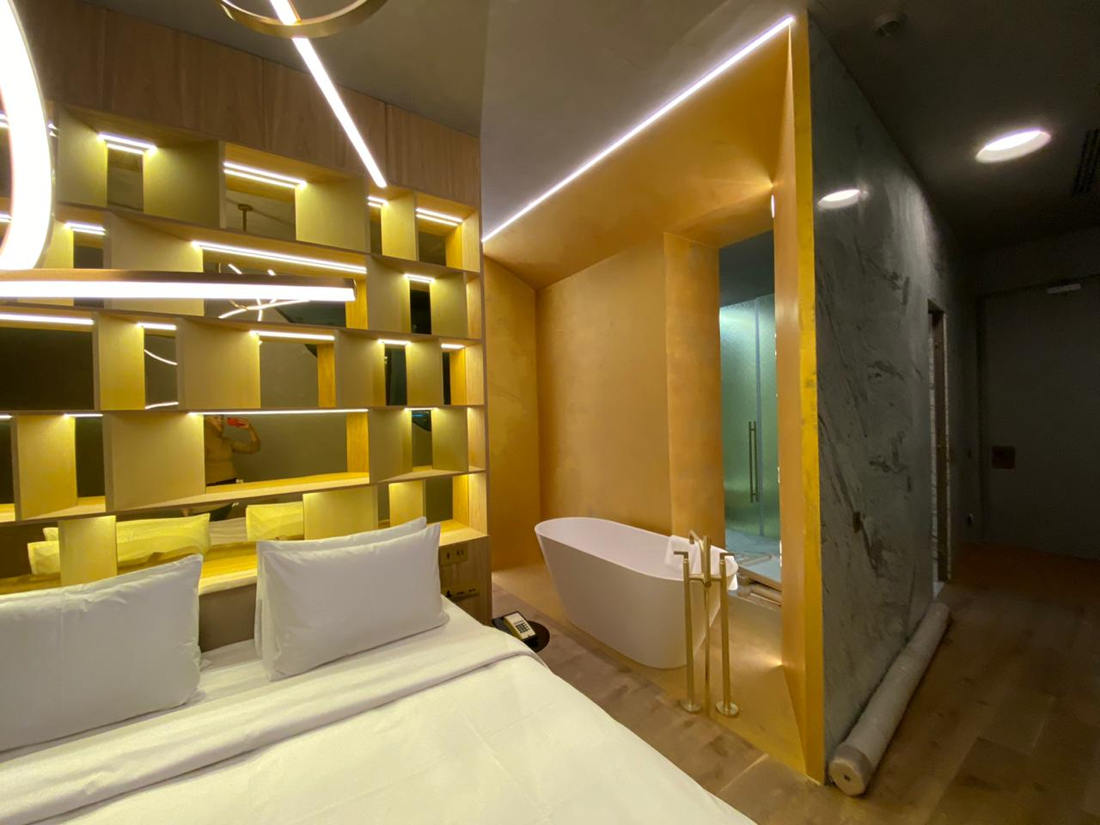
Estilos de pinturas decorativas que son tendencia
Con las pinturas decorativas se pueden emular la apariencia de algunos materiales cuyo precio es mucho más costoso. Dependiendo de la creatividad de cada cual, se puede crear un ambiente u otro para renovar el espacio y que se diferencie del resto de las estancias. Apostar por una decoración más tradicional o por una que rompa con todo lo establecido y que impacte a simple vista.
Todo es cuestión de moda, o no. Lo que está claro es que con esta técnica decorativa se pueden lograr grandes cambios rápidamente. A continuación vamos a analizar los estilos que más se llevan en la decoración de interiores. Desde los más clásicos hasta los más actuales.
Estilo clásico o nórdico
Lo clásico no tiene por qué estar en desacuerdo con lo vanguardista. De hecho, una decoración minimalista o con influencia de los países escandinavos es una de las tendencias más populares. Apostar por colores claros como el blanco o el beige para las paredes y combinarlo con muebles de madera o pisos de parqué, siempre es elegante.
El estilo clásico y el estilo nórdico se definen por acabados suaves y uniformes, evitando a toda costa extravagancias. Un ambiente elegante, atemporal y cómodo que es muy fácil de obtener con una pintura decorativa para las paredes.
Estilo degradado para una pared acento
El estilo degradado es una peculiar manera de pintar las paredes porque visualmente parece que se hayan quedado a medio hacer. Una técnica en la que habitualmente se utilizan diferentes tonalidades del mismo color y cuyo efecto es espectacular. Es uno de los estilos favoritos para lograr lo que se llama una pared acento, que destacará sobre el resto.
Hay que dividir la pared que se vaya a pintar en tres partes. Primero, se pinta toda la superficie con el color más claro. Después, se utiliza el color intermedio hasta llegar a la línea que se ha trazado. Con la ayuda de una brocha, cuando la pintura está todavía humeda, difuminar la línea o borde. A continuación, pintar la franja o parte de abajo del todo con la tonalidad más oscura y, como se ha realizado antes, difuminar los bordes con una brocha hasta que no se vean las franjas.
Estilo vintage
El estilo vintage es uno de los recursos más socorridos, y también más llamativos, para dotar de carácter al espacio. Y una de las opciones más accesibles para lograrlo es renovar la pared con una pintura decorativa que ofrezca dicho acabado. Los marrones son los colores más comunes de este tipo de pinturas que logran rápidamente un envejecido natural sobre las paredes. Tan naturales como la vida misma.
Topciment, fabricante de pinturas decorativas de calidad
Desde hace más de 15 años, desarrollamos todo tipo de revestimientos. Entre ellos, fabricamos diferentes pinturas decorativas de calidad para pisos y paredes según el acabado que se busque. Visita nuestro sitio web y descubre las ventajas de cada una de las opciones que ofrecemos a los profesionales.
Suscríbete a nuestro boletín informativo
Recibe en tu email consejos para la aplicación y cuidado del microcemento, las últimas tendencias y novedades de los productos de Topciment.




